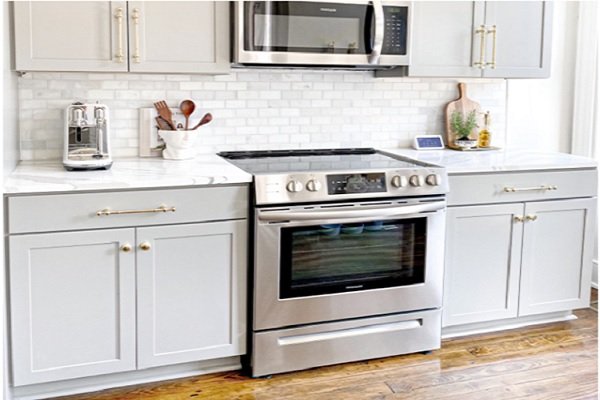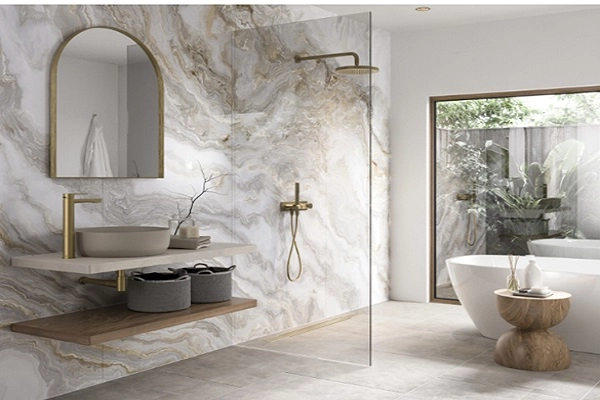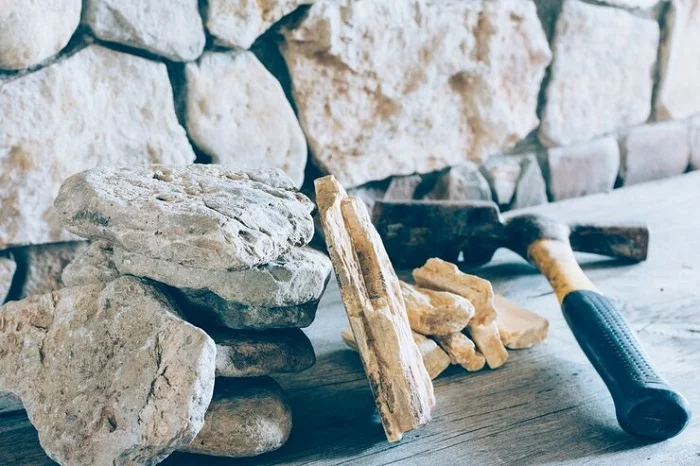Combining natural stones can elevate any interior design by adding dimension, contrast, and visual interest. But mixing stones effectively requires a thoughtful approach to colour, texture, and style, ensuring each stone complements the others rather than competing.
This guide explores essential strategies for blending different types of indoor natural stones, from creating a cohesive colour palette to pairing textures that work together harmoniously, illustrated with real-world examples and case studies to inspire your own designs.
Developing a Cohesive Colour Palette
When mixing natural stones, a well-planned colour palette is crucial to maintaining harmony within the space. Natural stones come in a vast range of colours, from soft neutrals like cream and beige to bold tones like rich blacks and deep greens. Selecting colours that complement each other not only prevents visual chaos but also creates a balanced, unified look.
- Start with a Dominant Colour: Choose a primary stone with a colour that will serve as the anchor for the space, such as a warm beige travertine or classic white marble. This stone will cover the largest area or serve as the focal point, setting the tone for the other colours.
- Consider Undertones: Pay attention to the undertones in each stone. For example, if your primary stone has a warm, earthy undertone, select secondary stones that have compatible warm tones. Mixing warm and cool undertones can work, but it requires careful placement and balance to avoid clashes.
- Layer in Accent Stones: Introduce one or two accent stones to add visual interest and contrast. These accents could be darker shades of the same colour or complementary colours that subtly enhance the dominant stone. For example, pairing a soft white marble with a dark grey slate can create a classic, sophisticated look.
- Use a Neutral Base for Balance: Adding neutral stones, such as limestone or sandstone, can act as a mediator between bolder colours. Neutrals provide visual breathing room, balancing the composition and helping each stone stand out without overwhelming the space.
- Consider the Light Source: Natural light changes the appearance of stone colours throughout the day. Stones with rich colours like green or blue can appear different under varying light sources, so assess the colours in your intended space before making final decisions.
Combining Textures That Work
Texture is a powerful design tool that can add depth and interest when mixing different natural stones. Some stones are inherently smooth and polished, while others are rugged and rough, and pairing these textures can create a dynamic, layered look. However, a balance between textures is essential to avoid an overly busy appearance.
- Contrast Polished and Rough Finishes: Using a polished marble countertop against a textured slate or travertine backsplash adds visual contrast and a tactile quality that enhances the space. The smooth, reflective surface of the marble provides a refined look, while the roughness of slate introduces a natural, earthy touch.
- Pair Matte and Glossy Surfaces: Combining matte stones like honed granite with glossy stones like polished quartzite creates an interesting interplay of light and shadow. Matte surfaces absorb light and create a subtle effect, while glossy surfaces reflect light and bring a sense of luxury and brightness.
- Use Texture to Define Zones: In open-concept spaces, different textures can help delineate areas. For example, a polished marble floor in the dining area could transition to a rough-textured slate in the adjacent kitchen, subtly dividing the spaces while maintaining a cohesive look.
- Vary the Size and Shape of Stones: For added visual interest, consider using stones in different shapes and sizes. Large stone slabs can serve as focal points, while smaller, more textured stones can act as accents. For instance, a large, smooth limestone wall could be paired with a mosaic of rough granite or travertine on a smaller wall or floor section.
- Use Texture for Subtle Accents: If you’re hesitant to go bold with textures, try using rougher stones as accents, such as on a fireplace or column. This way, the textured stone enhances the space without overwhelming the more polished, refined surfaces.
Real-World Examples and Case Studies
Exploring real-world examples of well-executed stone combinations can provide inspiration and insight into how these principles are applied effectively.
-
Modern Coastal Kitchen with Marble and Limestone

Design Elements: In this kitchen, the primary surface is a polished white marble with grey veining, used for countertops and a central island. This is complemented by a warm limestone backsplash, which has a honed, matte finish.
Why It Works: The cool, smooth marble and warm, matte limestone create a balance of warmth and refinement, ideal for a modern coastal style. The limestone’s subtle texture provides an earthy contrast to the elegance of the marble, creating an inviting, lived-in look.
-
Rustic Living Room with Slate and Granite

Design Elements: This living room features a rugged slate wall behind the fireplace paired with polished granite flooring. The colour palette leans into greys and charcoals, with hints of deep green.
Why It Works: The slate wall brings an outdoorsy, natural feel that complements the polished sophistication of the granite floor. The similar colour tones across both stones tie the room together, while the different textures add depth without overwhelming the space.
-
Luxury Bathroom with Polished Onyx and Travertine

Design Elements: In this spa-like bathroom, polished onyx is used for the walls, offering a luxurious, translucent effect. The floors are clad in honed travertine, which contrasts subtly with the high-shine onyx.
Why It Works: The polished onyx walls bring a touch of opulence, while the honed travertine floors add natural warmth. The contrast between the glossy onyx and the softer travertine creates a serene, balanced environment that feels both luxurious and grounded.
Conclusion
Mixing different types of natural stones within a space can bring layered textures, rich colour palettes, and unique character to your interiors. By developing a cohesive colour palette, thoughtfully combining textures, and drawing inspiration from real-world examples, you can create beautifully layered, textured spaces that showcase the timeless elegance of natural stone.
Whether your goal is to add subtle accents or make bold statements, combining natural stones effectively allows you to design interiors that are both dynamic and harmonious.
